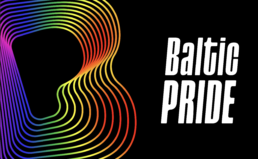The national LGBT* rights organization LGL presents a publication “Homophobic Bullying in Lithuanian Schools: Survey Results and Recommendations”, introducing one of the most pressing, yet unrecognized issues in Lithuanian schools. This publication is the first step towards tackling the problem of homophobic and biphobic bullying in Lithuanian schools and aims to provide teachers and other professionals working with young people the knowledge to help the fight against violence in the learning environment.
“Homophobic Bullying in Lithuanian Schools: Survey Results and Recommendations” is intended to determine the actual extent of this problem, to find out about teachers’ needs and their experience with the issue of homophobia in their daily work, and to learn about the experiences, needs and views of non-heterosexual students on this matter.
In October and November, 2014 the author of LGL’s study Kamila Gasinska conducted a survey on homophobic and biphobic bullying in Lithuanian schools, that will be published in both Lithuanian and English. The results of this survey will be made public on the 10th of March 2015 during LGL’s public event. More than one hundred and fifty LGBT* young people spoke about their experience of homophobic and biphobic bullying in Lithuanian schools. More than one hundred teachers also took part in LGL’s study, demonstrating what they think about this form of bullying.
In summarizing the results of the study, it can be said that the majority of teachers do not recognize the problem of homophobic bullying in schools. The fact that only one tenth of teachers said they know that homosexual and bisexual students study in their school is particularly concerning. In this context, the fact that the majority of teachers said that they very rarely notice homophobic bullying or are not aware of such incidents at their school is not surprising.
Slightly less than one-fifth of teachers support the disclosure of sexual orientation at their school and say that students should feel safe enough to reveal such information about themselves. More than half of teachers believe that school is not the place to talk about one’s sexual orientation. Such an approach does not allow most students to feel safe enough to be themselves at school.
Another alarming fact is that almost half of surveyed teachers felt that there is no need to deal with homophobic bullying because there is no such problem at their schools. In order to effectively overcome the issue of homophobic bullying in the field of education, it is necessary to recognize both the existence and the scale of this issue.
An analysis of the answers given by homosexual and bisexual students revealed that bullying based on sexual orientation is a common issue in schools. More than one-third of students who took part in the study stated that they feel unsafe at school, and more than half of them revealed their sexual orientation only to the people closest to them. Bullying based on sexual orientation is faced by eight out of ten surveyed students.
However, the fact that most non-heterosexual students have experienced name-calling, teasing or jokes based on sexual orientation should alarm all adults who work with youth. Homophobic language, especially when ignored by teachers and other school personnel, provokes stereotypes and negative attitudes towards LGBT* people, and enables students to discriminate against non-heterosexual persons and those who do not reflect to the stereotypical image of a man or a woman.
“Homophobic Bullying in Lithuanian Schools: Survey Results and Recommendations”, 2015
 This publication is a part of the project “C.O.D.E: Coming out for Diversity and Equality” which is funded by the European Union program PROGRESS.
This publication is a part of the project “C.O.D.E: Coming out for Diversity and Equality” which is funded by the European Union program PROGRESS.




